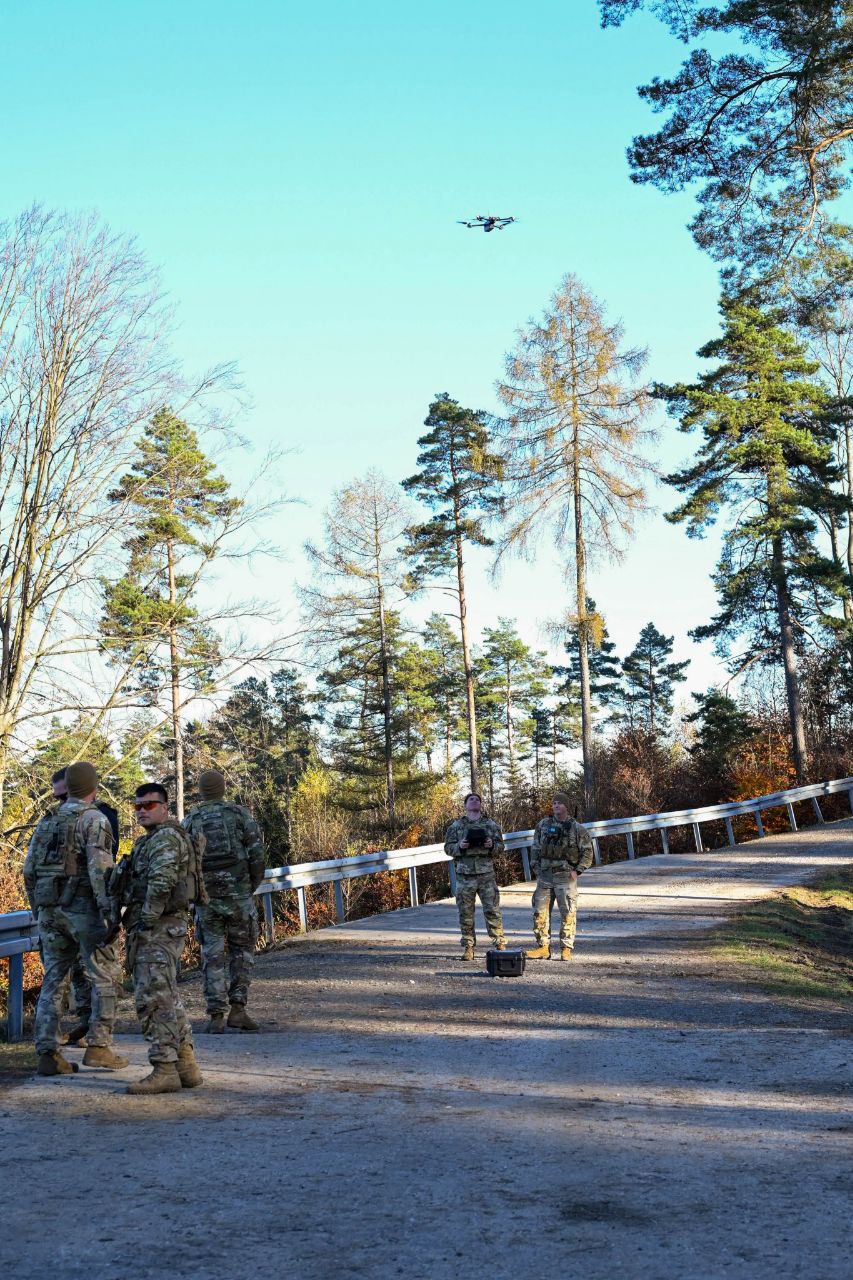Introduction: A Breakthrough in Unmanned Warfare
Switchblade 600 has officially entered a new era of capability with the successful completion of its first-ever air launch from an MQ-9A Unmanned Aircraft System (UAS). This test, conducted by General Atomics Aeronautical Systems (GA-ASI) in collaboration with AeroVironment, represents a major leap forward in the integration of long-endurance surveillance platforms with precision strike munitions. For military planners, this breakthrough signals a future where unmanned systems can provide not only intelligence, surveillance, and reconnaissance but also direct kinetic effects without relying on manned aircraft.
The concept of air-launching a loitering munition has long been seen as a game-changing capability. Loitering munitions such as Switchblade 600 can remain in the air for extended periods, identify targets with high precision, and strike when commanded. Pairing this with the MQ-9A an aircraft already valued for its endurance and range creates a powerful combination. This test validates the feasibility of integrating these technologies, potentially reshaping operational doctrines in multiple theaters.
Beyond the technical achievement, this success underscores the rapid pace of innovation in the defense sector. As adversaries develop anti-access and area-denial systems, the ability to strike from long range using unmanned assets becomes crucial. The Switchblade 600 air launch demonstrates how modern militaries can maintain a tactical edge while reducing risk to personnel.
Precision Strike Evolution
The development of Switchblade 600 marks a new chapter in the evolution of precision strike systems. Unlike traditional guided missiles, loitering munitions offer flexibility they can search for targets, abort attacks if conditions change, and re-engage when new opportunities arise. This makes them particularly valuable in dynamic battlefields where targets may move or appear unexpectedly.
With the air launch from MQ-9A, the range and survivability of Switchblade 600 are greatly enhanced. The unmanned aircraft can carry the munition closer to contested airspace without putting a manned crew at risk, and then release it at an optimal location. This capability extends the effective reach of forces, allowing commanders to strike deep behind enemy lines with minimal exposure.
Military analysts believe that such a capability could reduce collateral damage by allowing more deliberate targeting decisions. The combination of persistent surveillance and loitering attack options gives commanders more time to confirm target legitimacy before authorizing a strike, a key requirement in modern rules of engagement.
Switchblade 600 and MQ-9A Synergy
The synergy between Switchblade 600 and the MQ-9A platform cannot be overstated. The MQ-9A has been the workhorse of unmanned aerial operations for years, providing intelligence and reconnaissance across multiple conflicts. By integrating a loitering munition into its arsenal, the aircraft becomes more than a passive observer it becomes an active participant in the fight.
This synergy also simplifies logistics for militaries that already operate MQ-9As. There is no need to develop a separate launch platform or deploy additional ground-based launchers. The same aircraft that collects intelligence can now execute a strike mission within minutes, creating a seamless chain from detection to engagement.
The operational implications are significant. Forces can respond to time-sensitive targets faster, coordinate joint fires more effectively, and maintain pressure on adversaries in ways that were not previously possible. This level of integration is likely to become a model for future unmanned systems worldwide.
Switchblade 600 and Tactical Flexibility
The introduction of Switchblade 600 provides armed forces with unprecedented tactical flexibility. Unlike conventional munitions that are fired and follow a predetermined trajectory, loitering munitions can adapt mid-flight. They can linger over a battlefield, gather real-time intelligence, and strike the most critical targets when conditions are optimal. This flexibility allows commanders to react to changing situations with precision and speed, reducing the risk of errors and improving operational outcomes.
Switchblade 600’s ability to engage targets autonomously while being monitored by MQ-9A operators also enhances battlefield awareness. Operators can make informed decisions, abort or redirect strikes if the situation changes, and coordinate with other units for maximum effectiveness. This represents a paradigm shift in how air-launched weapons are used, emphasizing adaptability, responsiveness, and reduced collateral risk.
Furthermore, the modular nature of Switchblade 600 allows it to be equipped with different payloads depending on the mission requirement. Whether it is a precision strike against high-value targets or a suppression mission, the flexibility and speed of deployment make it a force multiplier for modern militaries.
Switchblade 600 and Operational Safety
Operational safety is a critical consideration in military deployments, and Switchblade 600 excels in this domain. By launching from an MQ-9A UAS, human pilots are removed from direct danger zones. The unmanned aircraft can approach contested or heavily defended areas and release the munition without risking personnel, a major advantage in high-threat environments.
The loitering capability also provides additional safeguards. Targets can be reassessed mid-flight, reducing the likelihood of unintended damage. The Switchblade 600’s guidance system integrates with MQ-9A sensors to provide precise targeting information, further enhancing safety and accuracy.
These safety features make the system particularly attractive for operations in complex terrain or urban environments where minimizing civilian casualties is a priority. As militaries around the world adopt stricter engagement protocols, technologies like Switchblade 600 set a new standard for responsible force projection.
Switchblade 600 and Global Military Innovation
The successful air launch of Switchblade 600 highlights ongoing global innovation in military technology. Loitering munitions are increasingly viewed as essential components of modern warfare, blending surveillance and strike capabilities into a single system. By achieving this milestone, GA-ASI and AeroVironment demonstrate leadership in advancing unmanned warfare technologies.
International defense observers note that such innovations could redefine strategic calculations. Countries adopting similar capabilities can enhance deterrence and provide rapid response options in crises. This creates a ripple effect in the defense sector, prompting other nations to invest in research, development, and integration of comparable systems.
Moreover, the integration of Switchblade 600 into operational fleets offers lessons for future unmanned systems design. Developers now have a tested model for combining endurance, loitering ability, and precision strike in a single platform. The success of this air launch marks a turning point in how unmanned assets will be deployed across global theaters in the coming years.
Switchblade 600 and Future Warfare
The capabilities demonstrated by Switchblade 600 suggest significant implications for the future of warfare. With air-launched loitering munitions, militaries can project power rapidly and efficiently while minimizing exposure to human personnel. This technological advancement enables a more agile and responsive force structure, adapting quickly to evolving threats across multiple theaters.
Furthermore, the use of Switchblade 600 aligns with emerging doctrines emphasizing networked warfare. By connecting unmanned aircraft, munitions, and command centers, armed forces can operate more cohesively, respond faster, and optimize resource allocation. This level of integration is expected to redefine operational planning and execution in coming decades.
For those interested in defense technology insights and strategic analysis, detailed reports can be found on Mauritius News, providing context on how systems like Switchblade 600 fit into broader military modernization efforts.
Switchblade 600 and International Collaboration
The development and deployment of Switchblade 600 underscore the importance of international collaboration in advanced defense projects. GA-ASI and AeroVironment worked closely to integrate their technologies, ensuring compatibility and operational reliability. Such partnerships accelerate innovation, reduce development risks, and enhance the effectiveness of military platforms.
Collaboration also extends to testing, training, and doctrine development. By sharing expertise and lessons learned, partner nations can adopt similar capabilities while avoiding costly trial-and-error processes. This cooperative approach strengthens alliances and promotes interoperability, critical factors in multinational operations.
To understand the global significance of such programs, defense analysts frequently refer to reports from trusted organizations like the U.S. Department of Defense, which provide insights into technological trends and the strategic context of emerging unmanned systems.
Switchblade 600 and Technological Advancement
Technological advancement is at the heart of Switchblade 600’s value. By combining long-endurance UAS platforms with precision loitering munitions, militaries gain an unprecedented tool for situational awareness and tactical response. The integration of sensors, guidance systems, and autonomous targeting capabilities represents a major leap forward in operational efficiency.
These innovations also drive competition in the defense sector, pushing other companies and nations to develop comparable systems. This fosters continuous improvement, leading to more capable, reliable, and versatile unmanned platforms. Switchblade 600’s success serves as a benchmark for what is possible in modern warfare.
Moreover, the knowledge gained from these programs can be applied to civilian aerospace and technology projects, offering benefits beyond the military domain, including advancements in autonomous systems, remote sensing, and precision logistics.
Conclusion: A New Era with Switchblade 600
Switchblade 600’s first air launch from the MQ-9A UAS marks a defining moment in unmanned warfare. By providing enhanced precision, tactical flexibility, and operational safety, it reshapes the way militaries approach both planning and execution. This milestone highlights the importance of technological innovation, strategic collaboration, and the continuous evolution of modern armed forces.
As militaries integrate such systems into their operations, they set the stage for a new era of conflict management where speed, accuracy, and safety are paramount. Switchblade 600 not only strengthens capabilities today but also lays the foundation for the next generation of unmanned aerial and loitering strike systems.




